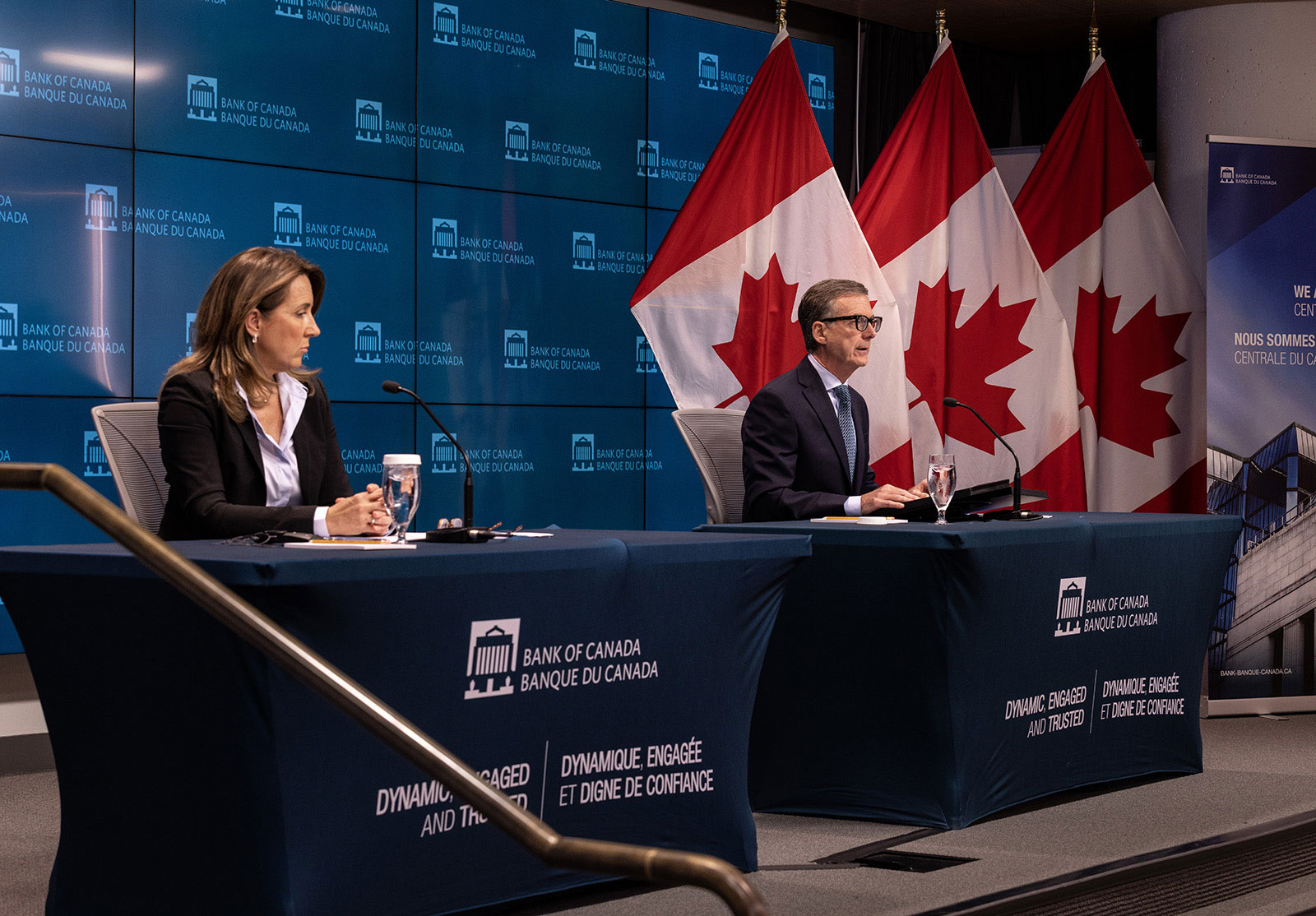
The Bank of Canada is holding its key interest rate steady at 5%, arguing it is still too soon to start lowering rates.
The central bank announced its interest rate decision on Wednesday as economists widely expected no change in the policy rate.
Inflation has continued to ease and the economy is weakening, but underlying price pressures are still persistently high, it said.
“With inflation still close to 3% and underlying inflationary pressures persisting, the assessment of governing council is that we need to give higher rates more time to do their work,” said Governor Tiff Macklem, according to his prepared remarks.
“We’ve come a long way in our fight against high inflation. But it’s still too early to loosen the restrictive policy that has gotten us this far.”
Canada’s inflation rate dropped to 2.9% in January, falling back within the Bank of Canada’s 1% to 3% target range.
But the central bank notes its preferred core measures of inflation, which strip out volatility in prices, are still running between 3% and 3.5%.
Higher interest rates have helped slow down the pace of price growth by causing a pullback in spending in the economy.
However, shelter price inflation — the biggest contributor to inflation — remains elevated, and gasoline prices are also expected to continue adding volatility to inflation in coming months, the central bank said.
The Bank of Canada has been clear it doesn’t want to move too soon, only to have to reverse course later.
“We don’t want to keep monetary policy this restrictive for longer than we have to,” Macklem said. “But nor do we want to jeopardize the progress we’ve made in bringing inflation down.”
Economists said the central bank is in no hurry.
“The Bank of Canada … didn’t make any great leaps towards an actual rate cut today,” said CIBC chief economist Avery Shenfeld. “For now, the overall message is that it’s too early to cut, and that they need to see more progress on inflation.”
Economic conditions have given the central bank more runway, said TD’s director of economics James Orlando.
“With core rates of inflation tracking around the mid-3% level, the bank can justify waiting longer. Luckily the central bank has been gifted a little more time to wait. Economic growth eked out small, but positive, growth to end 2023,” he said.
“With effectively no pressure for the BoC to respond, it can sit back and wait for a couple more inflation reports to roll in.”
The BoC expects inflation to remain close to 3% in the first half of 2024 before easing, and forecasters widely expect the central bank to begin lowering interest rates around the middle of the year.
The next rate announcement is scheduled for April 10.